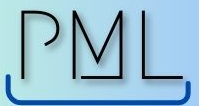Introduction: In an era where teams often work remotely, in different time zones, or just require efficient management processes, the need for effective project management tools is ever-growing. One of the tools that has grown in prominence is Wrike. Offering a comprehensive set of features tailored for a variety of teams and projects, Wrike stands out in the crowded field of project management software.
History and Development: Founded in 2006 by Andrew Filev, Wrike began as a small startup but rapidly expanded its customer base. Over the years, it has refined its offerings and integrations, positioning itself as a formidable solution for enterprises and smaller teams alike.
Core Features:
- Interactive Timeline (Gantt Chart):
- Provides a visual representation of tasks over time.
- Allows setting dependencies between tasks, ensuring a logical flow of activities.
- Real-time Collaboration:
- Team members can collaborate on a task in real-time.
- Commenting, editing, and status updates are instantly viewable.
- Workload View:
- Visualize team members’ tasks.
- Easily reassign tasks to balance workloads.
- Customizable Dashboards:
- Create a unique view of projects, tasks, and updates.
- Tailor dashboard widgets according to individual or team needs.
- Time Tracking:
- Monitor the time spent on each task.
- Generate time reports for team members or projects.
- Templates:
- Pre-made project structures for various types of projects.
- Speed up project initiation and ensure consistency.
Integrations:
Wrike is known for its extensive integrations with other tools. Some notable integrations include:
- Google Workspace
- Microsoft Office 365
- Adobe Creative Cloud
- Salesforce
- GitHub
Security:
With two-factor authentication, role-based access controls, and data encryption (both in transit and at rest), Wrike prioritizes the security of its users’ data. For enterprises, there are additional features like single sign-on (SSO) and audit reports.
Pricing:
Wrike offers a tiered pricing model to cater to different needs:
- Free (for small teams with basic requirements)
- Professional (for fuller project planning)
- Business (advanced features for larger teams)
- Enterprise (custom solutions and advanced security features)
User Experience:
The platform is designed with user-friendliness in mind. With a clean interface and intuitive controls, even those new to project management tools can quickly navigate and understand Wrike.
Summary: Wrike stands out as a project management tool for its flexibility, depth of features, and attention to the varied needs of its users. Whether you’re managing a small team with simple projects or an enterprise with complex, multifaceted initiatives, Wrike has the capability to streamline your workflow and improve collaboration. Before settling on a project management tool, it’s worth giving Wrike a test drive to see if it aligns with your team’s specific requirements.
